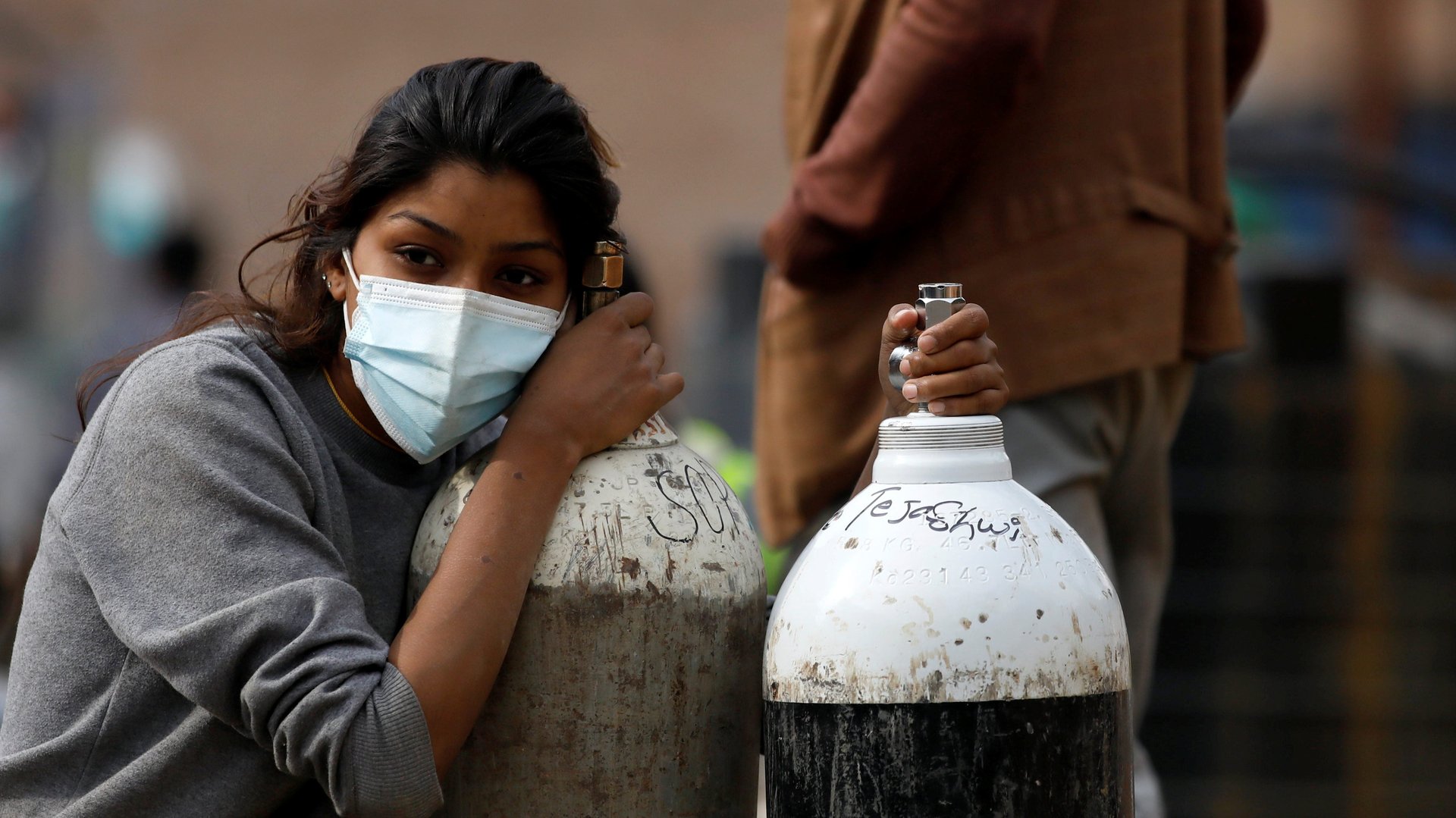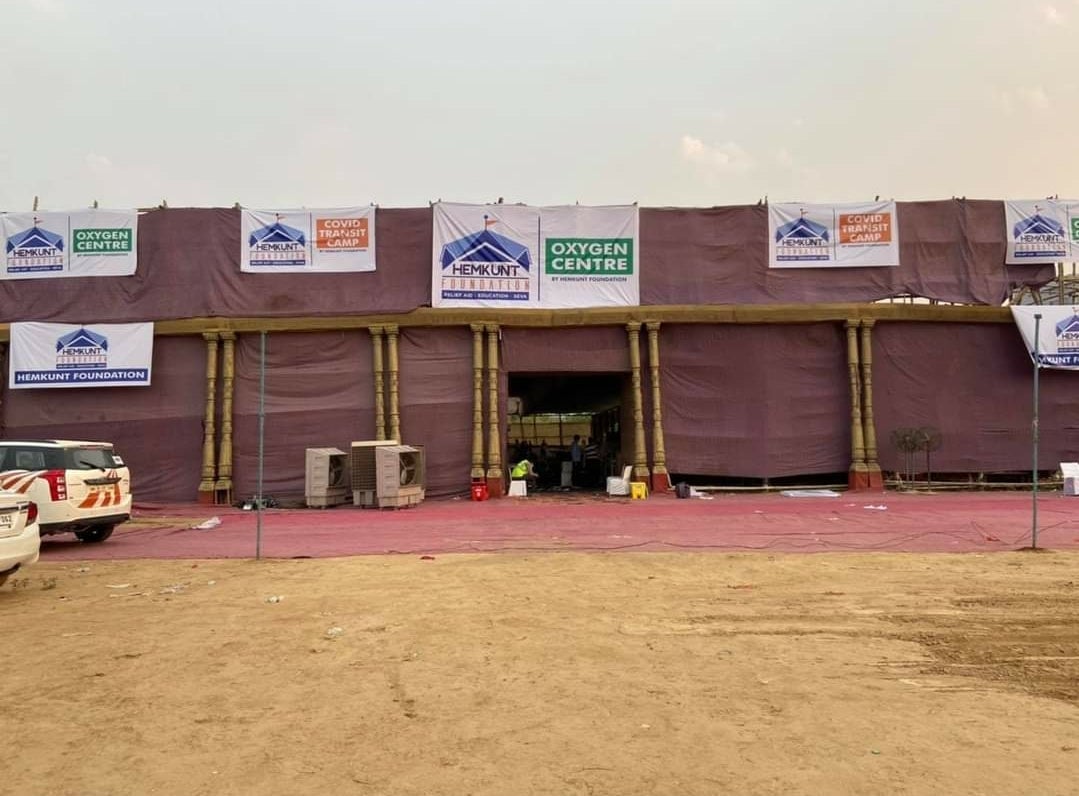How an NGO helped 10,000 Covid-19 patients survive India’s oxygen shortage
Over the last six weeks, thousands of Indians have lost the battle against Covid-19 due to shortages of oxygen, medicines and hospital facilities. Many of those who managed to survive did so with the help of healthcare resources they procured by pleading and begging friends and strangers on social media. Amid this gloom and anguish, a local non-government organisation has become synonymous with hope.


Over the last six weeks, thousands of Indians have lost the battle against Covid-19 due to shortages of oxygen, medicines and hospital facilities. Many of those who managed to survive did so with the help of healthcare resources they procured by pleading and begging friends and strangers on social media. Amid this gloom and anguish, a local non-government organisation has become synonymous with hope.
Hemkunt Foundation, an NGO headquartered on the outskirts of Delhi, has helped around 10,000 people during the second wave of Covid-19 in India. The 10-year-old organisation, which has now shot to global fame due to its free of cost Covid relief work, is running more than 12 projects to help reduce the scarcity of oxygen.
The foundation has not only helped common people but several hospitals and even powerful Indians. “We are helping hospitals and government, too. The president’s house and several governments have also reached out to us in need of oxygen,” Irinder Singh Ahluwalia, founder and CEO of Hemkunt Foundation, told Quartz over the phone on May 13. Hemkunt Foundation has also provided five oxygen cylinders to one of the income tax commissioners in Delhi-NCR, he said.
What is Hemkunt Foundation?

Started by Ahluwalia in 2010, the foundation has been providing aid and doing rehabilitation work for several causes. For instance, after a devastating flood in the northern Indian state of Uttrakhand in 2013, Singh’s NGO helped in rebuilding houses and roads. More recently, Hemkunt Foundation offered help during the farmer protest, by setting up waterproof and insulated tents fitted toilets, drinking, and bathing water, and charging stations.
During the first Covid-19 in India in 2020, the NGO provided around 360 tonnes of cooked meals to migrant labourers who were forced to go back to their villages on foot as they lost employment due to a sudden and unplanned nationwide lockdown.
As per the foundation, it has over 5,000 donors globally.
Several of the foundation’s supporters have hosted ”charity steams” on social media to raise funds. For instance, on April 30, YouTube channel Slayy Point raised Rs50 lakh ($68,186) to donate to Hemkunt Foundation. Recently, Indian cricketer Rishabh Pant showed support for Hemkunt Foundation on his social media.
Besides Gurugram, the NGO is doing relief work in Delhi and its neighbouring areas like Noida, as well as smaller towns like Jaisalmer, and Dehradun. “We are sending out vehicles every hour to fulfil the requirements across these cities,” Ahluwalia said.
People in India or abroad can donate to Hemkunt Foundation through various modes.
Hemkunt Foundation and India’s oxygen crisis
The organisation started its Covid relief work in April when India’s second wave picked up and the country started clocking over 100,000 cases a day.
“We started around 25 days ago with a makeshift camp in Gurugram and were providing oxygen through cars. But as more critical patients came to us, we made sitting arrangements,” Ahluwalia told Quartz. “But the Covid situation kept on becoming worse and we realised these arrangements aren’t enough. We later set up a makeshift facility with a capacity of 700 medical beds along with 24X7 ambulance service and food, among other services.”

The foundation has also set up a dedicated helpline (9990691313) where people can reach out for help.
“We used to receive 10,000 calls on a daily basis from the families and friends of critical patients asking for oxygen cylinders or concentrators,” Singh said. “The number of calls has come down to around 3,000 now.”
Singh believes that the situation in Delhi is now somewhat under control.
How did Hemkunt Foundation get oxygen?
At a time when even the Indian government was caught unawares, Hemkunt Foundation faced its own challenges in organising oxygen supplies to help the needy.
The organisation, which has over 100 volunteers aged 17-65 years, tapped many doors to arrange oxygen concentrators and other medical supplies, Singh said.
“We arranged oxygen from anywhere we could. Be it Delhi, London, the US, Mumbai, we tried everything. We ordered around 2,700 concentrators,” Singh said. “We bought them at whatever prices they were available.”
Among his biggest challenges, Singh said, was dealing with the governments. “Some of our vehicles containing oxygen cylinders got seized.”
“When there’s a shortage, states also do not want their oxygen to go to some other place. Rajasthan did not want its oxygen to move to Delhi and there were other states doing the same, too,” he added.
Now, Hemkunt Foundation has enough oxygen that it is helping out even hospitals. The NGO also launched a “drive-through” initiative under which they provide oxygen to patients inside their cars.
The organisation is also setting up “mini centres” that have up to 20 oxygen concentrators so patients don’t need to travel all the way to Gurugram. “We are expanding our services beyond Delhi too,” Singh said.
There has also been a significant drop in the number of patients who have been reaching out to Hemkunt Foundation in recent days. “I think for Delhi-Gurugram the worst is over. However, for states such as Uttar Pradesh, Madhya Pradesh, and Rajasthan, the situation is still grim. The virus is going to the rural belt now,” he said.
India has been dealing with an oxygen shortage for the past month. While hospitals in the national capital were putting up SOS requests over social media, many caregivers of Covid-19 patients were asking for medical help through tweets and Instagram posts as the country’s overburdened system failed to keep up with the record spike in cases.